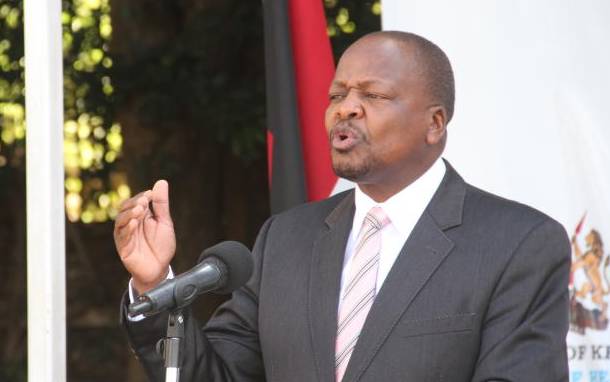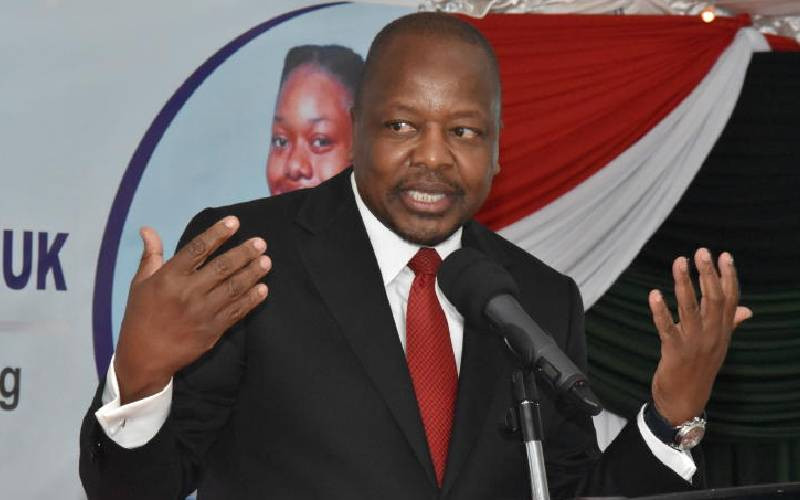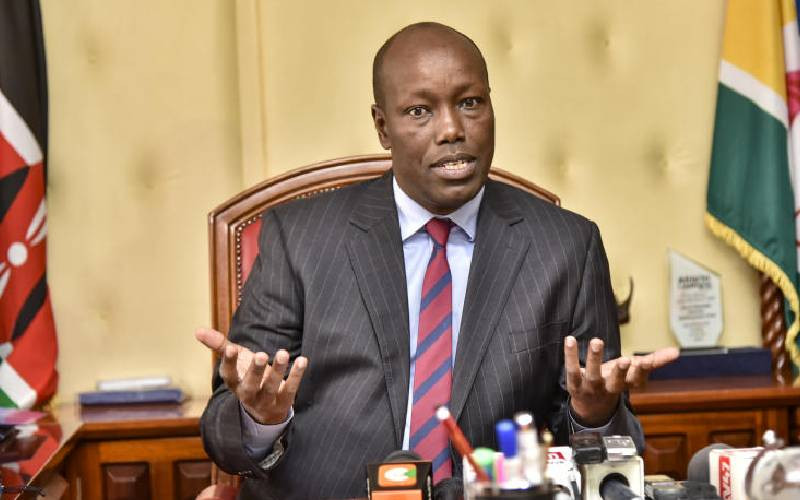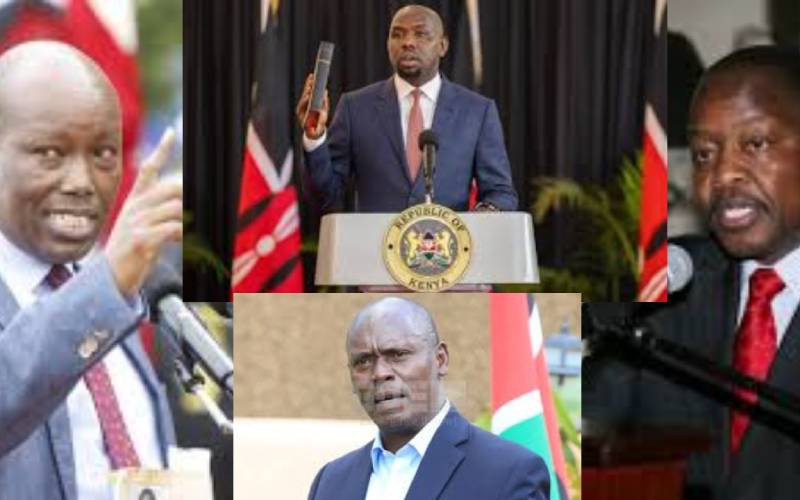
Designation of 460 public learning institutions as isolation centres, hiring of more than 6,000 medics and order for body bags offered a glimpse into a government preparing for the worst of the coronavirus pandemic.
Yesterday, the government designated some 460 schools and colleges across the country as isolation centres to create 138,220 beds just in case existing medical facilities are overwhelmed. Already recruitment of 500 more doctors and 5,550 health workers of all cadres is underway to cater for the additional staff requirements.
The holding centres to isolate and treat patients have been grouped into 10 regions. Additionally, stadiums will have tents erected to transform them into temporary medical facilities.
Sources said a consignment of beds have been imported from South Africa and China. Another consignment of mattresses and bedding will be delivered to the institutions.
Worse before better
“Beds are being imported or made locally for this purpose. They will also be distributed to stadiums where makeshifts tents are being erected in readiness for any eventuality,” said a well-placed insider.
Health Cabinet Secretary Mutahi Kagwe (above) last week warned the situation is likely to get worse before it gets better. He cautioned the country may continue to battle the pandemic for at least another two months.
“Let us brace ourselves for bad news, let us be ready because all the measures that we are going to take will not stop the disease abruptly. It is already here with us,” said Kagwe.
He said Kenyans must continue to comply with the health directives to maintain a physical distance of at least one metre, frequent hand-washing, good respiratory hygiene by covering mouth and nose when coughing as well as staying at home, especially when feeling unwell.
“We are hoping and praying for the best, but clearly we must also prepare for the worst. We are aware of the inconveniences caused, but this is the only way.”
At the beginning of this month, officials had cautioned that Kenya was entering a dangerous phase of the coronavirus pandemic that, if mismanaged, could see cases surge to 1,000 in 10 days. Authorities had projected that without drastic intervention to curb community infections, and if Kenyans dropped their guard, cases could hit 1,000 by April 9, rising to 5,000 by mid-April and 10,000 by the end of April.
Safe disposal of bodies
However, the projections seem to be off the mark by a huge margin as by yesterday, the country had recorded 179 cases. Also given only about 4,000 tests have been done it explains the low numbers.
As a pointer to preparations for grim outcome- the disease has killed thousands globally- the Ministry of Health is also in talks with local manufactures to produce body bags for safe disposal of bodies of coronavirus casualties.
Stay informed. Subscribe to our newsletter
Health Principal Secretary Susan Mochache, in a letter dated April 6 to her Industrialisation counterpart, Dr Francis Owino, calls for collaboration with technical experts in providing locally manufactured body bags.
“...The National Covid-19 Task force is undertaking key measures to control the outbreak in Kenya. Part of these measures include ensuring, proper disposal of human remains infected with coronavirus disease in body bags,” the letter said in part.
It specifies that the body bags should be ‘heavy-duty vinyl PVC plastic bag of 0.4mm thickness, have envelope zipper, be white and size of the adult be 40 by 90 inches and child 28 by 46 inches.’
A multi-agency team based at Embakasi has on a daily basis been conducting drills on the worst-case scenario that will include a possible total lockdown in urban areas. Should the situation deteriorate rapidly, the team is making arrangements for lorries to carry bodies for disposal and identifying places the bodies will be disposed of.
New rules published under the Health Act grant the Health CS powers to designate an area as a burial site for persons whose deaths result from Covid-19. The multi-agency team comprises of officials from Ministry of Health, police, intelligence, immigration, military and ambulance service providers.
The head of national co-ordination centres for isolation and quarantine facilities released the long list of isolation centres. The government had instructed Ministry of Education to work with counties to identify schools and colleges that would be used as isolation centres for the coronavirus cases.
Selected centres
The detailed list of the selected centres reveals that North Rift region, Cluster One, has 48 schools and colleges across seven counties with a total bed capacity of 15,001.
The centres are spread across Uasin Gishu, Trans Nzoia, West Pokot, Baringo, Nandi, Turkana and Elgeyo Marakwet.
In the South Rift region, under Cluster Two, some 47 learning institutions with a total bed capacity of 16,453 have been identified. The centres are spread across Nakuru, Narok, Kericho, Bomet, Laikipia and Samburu Counties.
Some 60 centres with a total bed capacity of 22, 619 beds have also been identified in the Nyanza region, which falls under Cluster Three. The region hosts Kisumu, Siaya, Homa Bay, Migori, Kisii and Nyamira counties.
In Nairobi region, some 12 centres with a bed capacity of 1,042 have identified. These are the University of Nairobi’s main campus and the medical school, Kenya Medical Training College, Multimedia University, Kenya Institute of Mass Communication, Nyayo Stadium, Kenyatta University, JKUAT, Upper Hill School, Langata Boys and Cooperative University.
Central region, which falls under Cluster Five, brings together Muranga, Kirinyaga, Nyandarua, Kiambu and Nyeri and will have a total bed capacity of 22,763 across 77 schools and colleges.
The Upper Eastern region will provide a total bed capacity of 12,384 across 45 centres. Embu, Tharaka Nithi and Meru Counties are covered under this region. Machakos, Kitui, Makueni and Kajiado counties have been listed under Lower Eastern region and will form Cluster Seven with a total bed capacity of 16,607 across 62 centres.
Under the Coastal region, some 50 centres spread across six counties will provide a total bed capacity of 14,101. Taita Taveta, Tana River, Lamu, Kwale, Kilifi and Mombasa counties fall here; Cluster Eight.
In the Western region, Kakamega, Vihiga, Busia and Bungoma counties will make available 29 centres with a bed capacity of 11,632.
Garissa, Wajir, Mandera, Isiolo and Marsabit counties collectively form the North Eastern region under Cluster Ten. With 28 centres identified, the region will produce a total bed capacity of 5,618.
 The Standard Group Plc is a
multi-media organization with investments in media platforms spanning newspaper
print operations, television, radio broadcasting, digital and online services. The
Standard Group is recognized as a leading multi-media house in Kenya with a key
influence in matters of national and international interest.
The Standard Group Plc is a
multi-media organization with investments in media platforms spanning newspaper
print operations, television, radio broadcasting, digital and online services. The
Standard Group is recognized as a leading multi-media house in Kenya with a key
influence in matters of national and international interest.
 The Standard Group Plc is a
multi-media organization with investments in media platforms spanning newspaper
print operations, television, radio broadcasting, digital and online services. The
Standard Group is recognized as a leading multi-media house in Kenya with a key
influence in matters of national and international interest.
The Standard Group Plc is a
multi-media organization with investments in media platforms spanning newspaper
print operations, television, radio broadcasting, digital and online services. The
Standard Group is recognized as a leading multi-media house in Kenya with a key
influence in matters of national and international interest.









